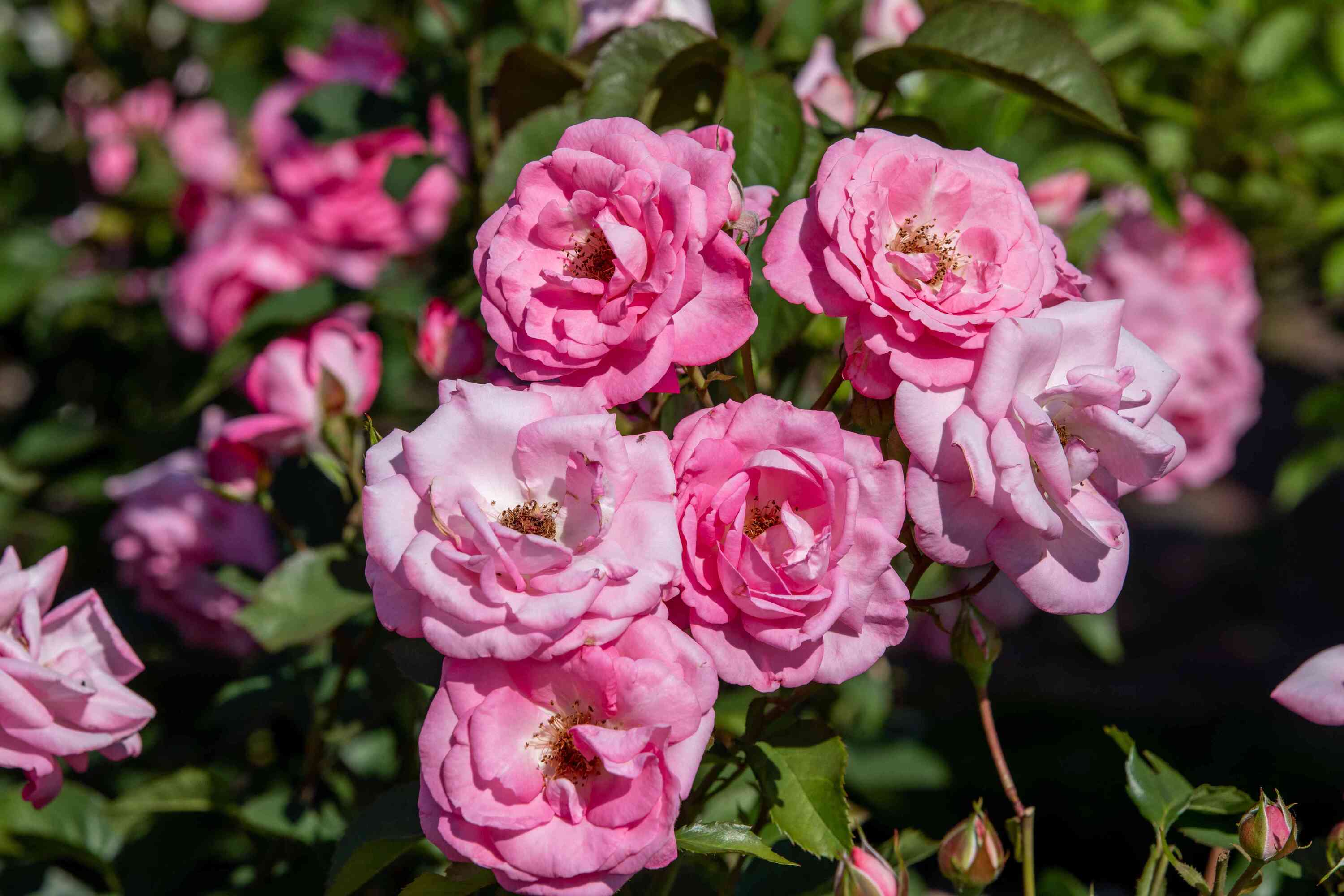
Roses have captivated human hearts for centuries, adorning gardens, poetry, and art with their timeless beauty and fragrance. These iconic flowers belong to the genus Rosa and encompass a diverse range of species and cultivars. Among them, the rose bush stands out as a symbol of love, elegance, and resilience.
In this article, we'll delve into the captivating world of rose bushes, unraveling their fascinating characteristics, and shedding light on their significance in horticulture and culture. From their rich history to their remarkable adaptability, rose bushes continue to enchant enthusiasts worldwide. Join us as we explore 10 intriguing facts about these beloved symbols of affection and beauty.
Key Takeaways:
- Roses come in thousands of varieties, each with its own unique charm and appeal, catering to different preferences and gardening styles. Their vibrant colors and delicate petals make them a beloved choice for gardens and floral arrangements.
- Rose bushes require proper care, including adequate sunlight, regular watering, and pruning, to thrive and produce vibrant blooms. Despite their beauty, they are susceptible to pests and diseases, requiring preventive measures and organic pest control methods.
The Rose is a Symbol of Love and Beauty
Roses have been cherished for centuries for their timeless beauty and enchanting fragrance. These stunning flowers have captured the hearts of people around the world, symbolizing love, passion, and romance. The rose bush, a perennial flowering plant of the genus Rosa, is revered for its exquisite blooms and has become a staple in gardens, landscapes, and floral arrangements.
The Rose Family, Rosaceae, is Vast and Diverse
The rose belongs to the Rosaceae family, which comprises a wide array of plants, including fruits like apples, pears, and cherries. This diverse plant family showcases the adaptability and versatility of roses and their relatives, making them a significant part of the botanical world.
There are Thousands of Rose Varieties
With over 100 species and thousands of cultivars, roses exhibit an incredible range of colors, shapes, and sizes. From classic red roses to vibrant yellow and delicate pink hues, each variety of rose possesses its own unique charm, catering to diverse preferences and gardening styles.
Roses Have a Rich Cultural and Historical Significance
Throughout history, roses have held profound cultural significance, featuring prominently in art, literature, and folklore. Their presence in ancient mythology, medieval heraldry, and modern-day celebrations underscores their enduring appeal and timeless allure.
The Rose is a Source of Fragrant Essential Oils
Rose essential oil, derived from the petals of select rose varieties, is highly valued in perfumery, aromatherapy, and skincare. Known for its captivating scent and therapeutic properties, rose oil adds a touch of luxury and indulgence to various products and rituals.
Rose Bushes Require Adequate Sunlight and Watering
To thrive and produce vibrant blooms, rose bushes necessitate ample sunlight, typically around six hours per day, and regular watering. Proper care and maintenance are essential for cultivating healthy and robust rose bushes in gardens and landscapes.
Pruning is Vital for Rose Bush Health and Growth
Regular pruning is crucial for promoting air circulation, removing dead or diseased wood, and shaping the growth of rose bushes. This horticultural practice helps maintain the overall health and vigor of the plants, allowing them to flourish and bloom abundantly.
Roses Attract Pollinators and Wildlife
The blossoms of rose bushes entice bees, butterflies, and other pollinators, fostering biodiversity and ecological balance. Additionally, the hips of certain rose species serve as a food source for birds and wildlife, contributing to the interconnectedness of natural ecosystems.
Rose Bushes Are Prone to Pests and Diseases
Despite their beauty, rose bushes are susceptible to various pests and diseases, including aphids, powdery mildew, and black spot. Implementing preventive measures and employing organic pest control methods can help safeguard rose bushes from potential threats.
Roses Have Endless Symbolism and Meaning
From love and admiration to secrecy and farewell, roses convey a myriad of emotions and messages, making them a versatile and cherished symbol in different cultures and contexts. Their symbolic significance adds depth and sentiment to bouquets, gifts, and floral arrangements.
The rose bush, with its captivating allure and rich symbolism, continues to captivate enthusiasts and admirers worldwide. Whether adorning gardens, expressing heartfelt sentiments, or inspiring creative endeavors, the timeless beauty of roses remains an enduring testament to nature's artistry and the human spirit.
Conclusion
In conclusion, rose bushes are not only exquisite in appearance but also fascinating in their characteristics and history. With their diverse varieties, stunning blooms, and rich symbolism, they have captured the hearts of people across cultures for centuries. From their ancient origins to their enduring popularity in modern gardens, rose bushes continue to enchant and inspire. Whether you're a seasoned gardener or a newcomer to the world of plants, cultivating and caring for these timeless beauties can be a rewarding and fulfilling experience. So, embrace the allure of rose bushes, and let their elegance and charm grace your outdoor spaces with timeless splendor.
FAQs
Q: How often should I water my rose bushes?
A: Rose bushes generally require regular watering, especially during dry spells. It's recommended to water them deeply at least once a week, ensuring that the soil is moist but not waterlogged.
Q: What is the best time to plant rose bushes?
A: The ideal time to plant rose bushes is in early spring or late fall when the weather is cooler, allowing the roots to establish themselves before the onset of extreme temperatures.
Was this page helpful?
Our commitment to delivering trustworthy and engaging content is at the heart of what we do. Each fact on our site is contributed by real users like you, bringing a wealth of diverse insights and information. To ensure the highest standards of accuracy and reliability, our dedicated editors meticulously review each submission. This process guarantees that the facts we share are not only fascinating but also credible. Trust in our commitment to quality and authenticity as you explore and learn with us.
